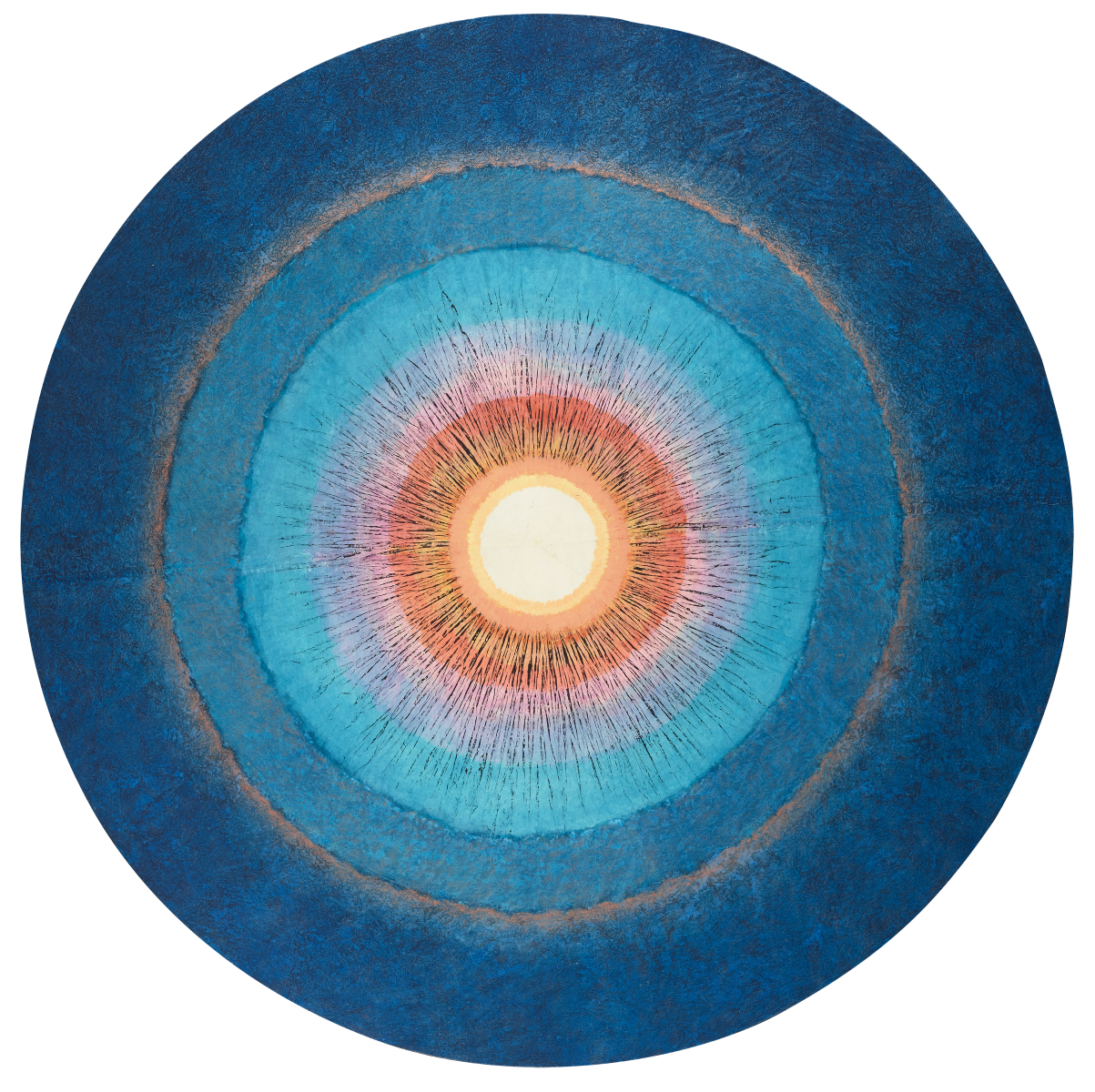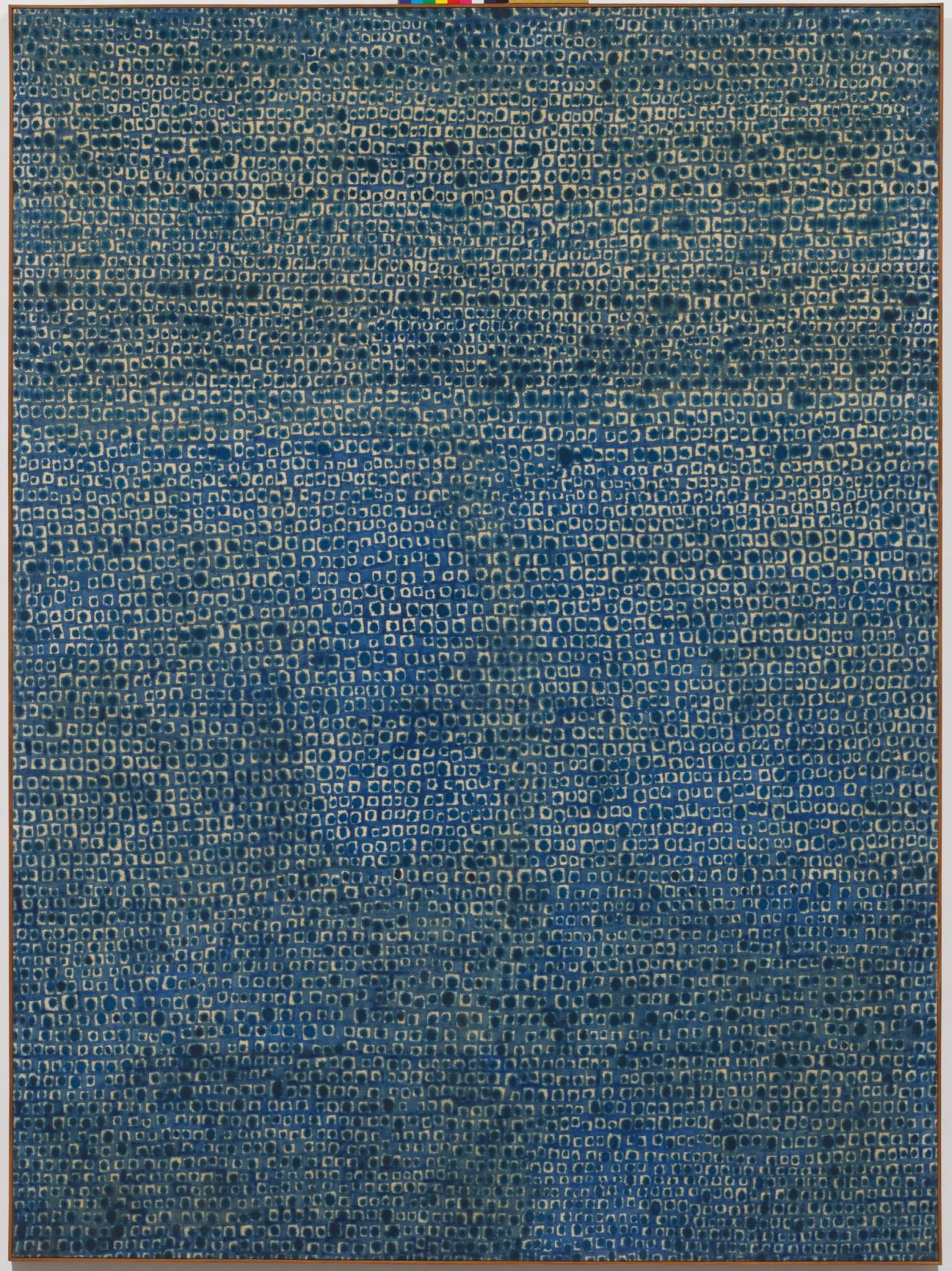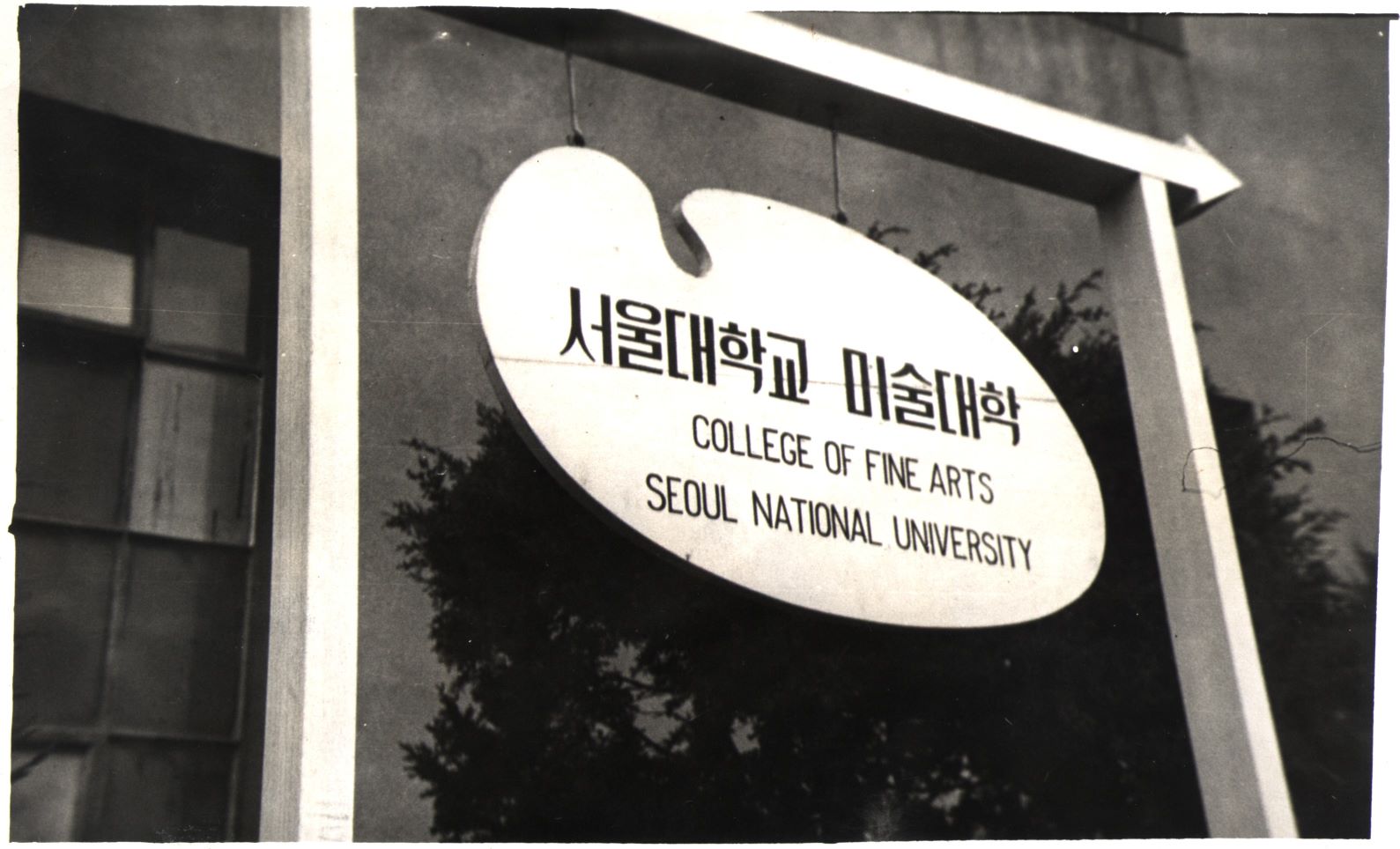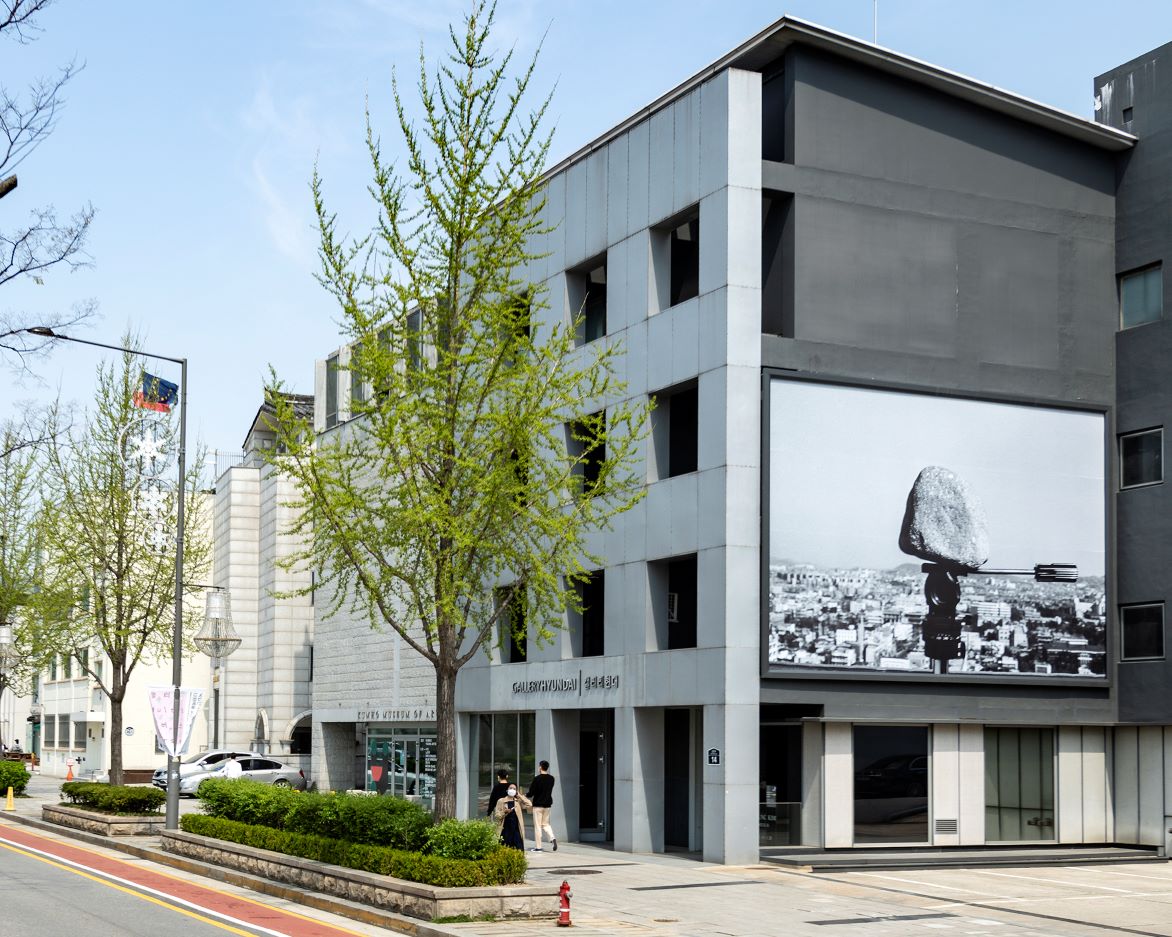
Bang Haija, Heaven-Earth, 2011, Natural pigment on paper on panel, 181(diameter), MMCA collection
Bang Haija
* Source: MMCA
Related
-

Abstract art
A term which can be used to describe any non-figurative painting or sculpture. Abstract art is also called non-representational art or non-objective art, and throughout the 20th century has constituted an important current in the development of Modernist art. In Korea, Abstract art was first introduced by Kim Whanki and Yoo Youngkuk, students in Japan who had participated in the Free Artists Association and the Avant-Garde Group Exhibition during the late 1930s. These artists, however, had little influence in Korea, and abstract art flourished only after the Korean War. In the 1950s so called “Cubist images,” which separated the object into numerous overlapping shapes, were often described as Abstractionist, but only with the emergence of Informel painting in the late 1950s could the term “abstract” be strictly used to describe the creation of works that did not reference any exterior subject matter. The abstract movements of geometric abstractionism and dansaekhwa dominated the art establishment in Korea in the late-1970s. By the 1980s, however, with the rising interest in the politically focused figurative art of Minjung, abstraction was often criticized as aestheticist, elitist, and Western-centric.
-

College of Arts at Seoul National University
The College of Fine Arts of Seoul National University is located in Sillim-dong, Gwanak-gu, Seoul. According to the Decree on the Establishment of Seoul National University, the College of Art including the Department of Fine Arts and the Department of Music was founded in August 1946 at Seoul National University. The Department of Fine Arts consisted of sub-departments of Painting I, Painting II, Sculpture, and Design. It was organized by Chang Louis Pal and Lee Soonsuk. Chang Louis Pal had served as head of the Education and Management Bureau in the U.S. Army Military Government in Korea (USAMGIK) in Korea since December 1945. Lee Soonsuk assumed practical tasks as an advisor to the art section of the USAMGIK from 1946 when the Education and Management Bureau was changed to the Ministry of Culture and Education. In 1946, there were nine faculty members at the Department of Fine Arts in the College of Art: Chang Louis Pal, Kim Yongjun, Gil Jinseop, and Lee Jaehun as professors; Yun Seung-uk and Lee Soonsuk as associate professors; and Kim Whanki, Chang Woosoung, and Lee Byeonghyeon as assistant professors. However, after the incident of Korean students and professors’ protest against the U.S.’s attempt to merge several colleges and universities into a single university, Kim Yongjun, Gil Jinseop, and Kim Whanki resigned. In 1954, the College of Art was reorganized into the College of Fine Arts with three departments of painting, sculpture, and applied art. The Department of Aesthetics, which had temporarily belonged to the College of Fine Arts since 1948, was transferred to the College of Liberal Arts and Sciences in 1960. In 1963, according to the relocation plan of the Seoul National University main school building, the College of Fine Arts was moved to the former veterinary department building in Yeongeon-dong, Jongno-gu. In 1972, it was moved to the liberal arts department building in Hagye-dong, Seongbuk-gu, and then in 1976, to the current Gwanak campus. In 1981, the three departments of painting, sculpture, and applied art were reorganized into the five departments of Eastern painting, Western painting, sculpture, crafts, and industrial art. In 1989, the Department of Industrial Art was renamed the Department of Industrial Design, and in 1999, the Department of Crafts and the Department of Industrial Design were merged into the School of Design. Currently, the College of Fine Arts consists of the Department of Oriental Painting, Department of Painting, Department of Sculpture, Department of Craft, Department of Design, and Interdisciplinary Programs.
Find More
-

Gallery Hyundai
A gallery located at Samseong-ro, Jongno-gu, Seoul. The gallery opened in April 1970 in Gwanhun-dong, Jongno-gu, Seoul, under the joint management of Han Yong-gu and Park Myung-ja. Started as Hyundai Hwarang (Hyundai Gallery), it was renamed as Gallery Hyundai in 1987. When it first opened, the gallery contributed to the development of contemporary Korean art, featuring the work of contemporary artists instead of antique calligraphy and paintings, which were actively exhibited and traded in Insa-dong. In September 1973, the gallery published an art magazine titled Hwarang, with an editing staff consisting of Lee Heung-u, Lee Gu-yeol, Park Rhaikyoung, Heo Yeonghwan, and Oh Kwang-su. After 1988, the magazine was renamed Hyundai Misul and it continued to be published until 1992. The gallery regularly held exhibitions of major figures in Korean contemporary art, such as Park Sookeun, Lee Jungseop, To Sangbong, Nam Kwan, Yoon Jungsik, and Chun Kyungja. After it moved to a new building in Sagan-dong in 1975, the gallery expanded the base for Abstract art through exhibitions featuring Yun Hyongkeun, Kim Tschang-Yeul, Park Seobo, Chung Sanghwa, and Lee Ufan.
-

Lee Ungno
Lee Ungno (1905-1989, pen name Goam) was born in Yesan, Chungcheongnam-do where he studied classic Chinese. He moved to Seoul in 1922 to study bamboo ink-painting from Kim Kyujin and was selected for the Joseon Art Exhibition [Joseon misul jeollamhoe]. In 1935, he attended Kawabatawa Art School and the Hongo Western Painting Center to study oil painting and learned Japanese realism from Matsbayasi Keiketsu. He returned to Korea in 1945 and produced realistic colored ink-wash paintings, such as the March 1st Independent Movement and Yungchayungcha. He pursued a style of semi-abstract art that attempted to express the inner spirituality. In the 1950s, he taught at Hongik University and Sorabol Art College. He moved to Europe after his exhibition in 1957 and created the letter-abstract genre that combines Western abstract art and East-Asian ink-wash painting. Diverse art critics, such as Jacques Lassaigne and Michel Tapie, praised his work, which led to several exhibitions in Europe, the U.S., and Japan. He opened the Oriental Painting Academy in Paris to teach ink-wash painting and received an honorary grand prize at the San Paulo biennale in 1965. Upon return to Korea he was imprisoned for two years because of the 1968 East-Berlin Affair and later moved to Paris to exhibit his works in Europe, the U.S., and Japan. In the 1980s, he created an ink-wash painting work depicting the people of the Gwangju Uprising. He passed away two days before a retrospective exhibition was held in 1989 in Seoul.






